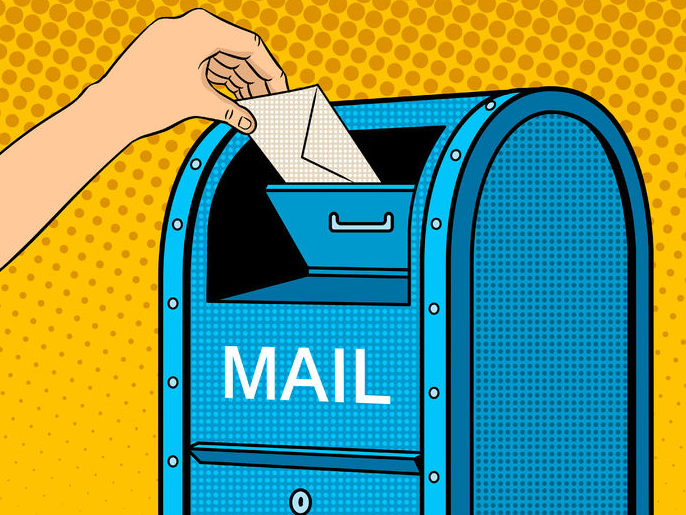These are dark times for direct mail fundraising. Response rates are down (and have been trending lower for more than a decade). At the same time, costs of paper, printing, and postage keep going up, usually faster than inflation.
And then there’s the M-word: Millennials. Everybody knows they don’t respond to direct mail. We’re not sure they can even find their own mail boxes!
So direct mail is dead, right? The sooner you stop using it for fundraising, the better. Right?
Not so fast.
A sober and non-panicked look tells us that direct mail isn’t dead. It’s not even sick. But it’s changing, like everything else.
If you’re profitably using direct mail in your fundraising program, cancelling it might be one of the biggest mistakes you could make.
Have you heard about the grand experiment of the American Cancer Society?
One of the biggest direct mail fundraisers in the US looked at the big picture of falling response rates, rising costs, and the looming Millennial Threat. On top of that, the direct mail program was a relatively small source of revenue. It seemed obvious to them: direct mail was fading in importance. So they suspended direct mail donor acquisition. Just acquisition, which is the least profitable and most difficult part of direct mail. They kept their large and thriving direct mail donor cultivation program going. The suspension started in January 2013.
They restarted direct mail donor acquisition about 18 months later.
Because the experiment was a financial disaster. Here’s what happened:
- The number of new donors to the Society dropped by 11% — those other channels didn’t pick up the slack.
- The massive and successful event, Relay for Life, raised $25 million less than the previous year.
- The estimated five-year impact on income: a loss of $29.5 million
And that doesn’t even look at the loss of bequests, which largely come from direct mail donors. That loss is likely only now starting to be felt. And it is going to add millions more in losses over the years.
If an 18-month suspension of direct mail acquisition can do that much damage to an organization with the massive brand recognition and resources of the American Cancer Society, think what it might do to most fundraisers — the rest of us, who are far smaller and far more dependent on individual donors.
Thing is, even as it grows more expensive and difficult, direct mail is a keystone investment for almost any fundraising program. It is a scalable, reliable source of donors who will do more for you over time. As one American Cancer Society leader said after the experiment, “For every $1 we invest in direct mail acquisition, we bring in $7 over the course of three years.”
No question — direct mail is not the cure-all it used to be. The cost has made it unworkable for some organizations.
If you have a viable direct mail program and you shut it down, here are some things that may happen:
- You’ll likely lose immediate (first year) revenue.
- Your event revenue may suffer.
- You’ll get fewer planned giving prospects.
- Your major donor program will shrink. The large majority of major donors start their giving as direct mail donors.
- Your online giving will probably suffer — direct mail is one of the main drivers of online giving.
But what about the Millennial Threat? Are their different habits and media use going to finally kill off direct mail as a fundraising channel?
Maybe. But that isn’t a factor yet. People of that age are not DM-responsive — but they’re less responsive to other media too. We thought the same things about Boomers a couple of decades ago. When they were in their 30s and 40s, they were less responsive to direct mail, and all kinds of boys cried all kinds of wolf about the coming doom. But as the Boomers have aged into their 50s, 60s, and even 70s, we see them paying more attention to direct mail. Chances are, the Millennials will do something similar when they reach those ages. But even if they don’t, that’s years in the future. It’s not now.
So how do you know if direct mail is working? There’s a pretty easy calculation:
- If your direct mail acquisition is getting a return on investment of less than 0.5:1, it doesn’t really work. The cost is so high you will always struggle to make it pay off.
- If that acquisition ROI is 0.65:1 or better, you almost certainly have a viable direct mail program.
- If it’s somewhere between 0.5 and 0.65, it might be viable.
And here’s the other factor: Direct mail is the best source of major donors and bequest donors. Nothing else comes close. So to really get full value from direct mail, you must have two things:
- A robust donor upgrade pipeline that encourages donors to increase their giving.
- A solid bequest marketing and follow-up program.
Without those things, even a solid direct mail program is probably iffy in the long run!
Bottom line: Direct mail is a challenge. And expensive. (And it’s getting more so.) Direct mail is important, but it might not be for you just now. Keep your eye on that initial return on investment and make sure you have a way to maximize donor upgrading and bequest marketing!
For more on the investment mindset you need to maximize your direct mail program, see this enlightening video with Professor Adrian Sargeant: How to Use — or Misuse Donor Lifetime Value
Want help overcoming the challenges of direct mail? Join The Fundraisingology Lab for the resources and community that will help you become a master!











1 Comment. Leave new
[…] Now I know what you’re thinking, “There’s no way Millennials will give through direct mail – they’ll just donate online!” Well interestingly, decades ago, the philanthropic sector was in a panic over the giving behaviours of Boomers. Yes, those same precious Boomers that now account for the majority of your direct mail donor file. Apparently, when they were in their 30s and 40s, they were less responsive to direct mail, which sent fundraisers into a tizzy. However, as these boomers grew into their 50s, 60s, and 70s, they became more engaged in direct mail. Turns out, Millennials are expected to do something similar when they reach those ages (Moceanic). […]